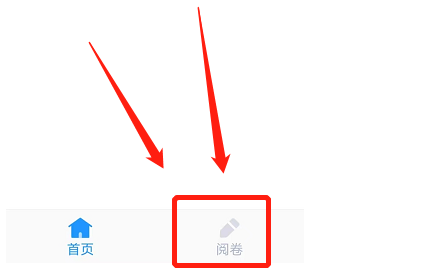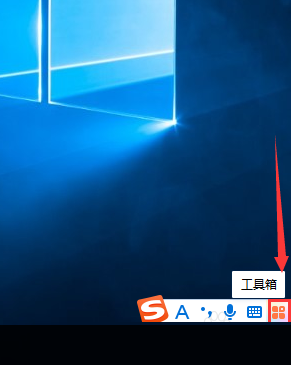本教程操作环境:windows7系统、ECMAScript 6版、Dell G3电脑。
 (相关资料图)
(相关资料图)
es6中扩展运算符介绍
扩展操作符 … 是ES6中引入的,将可迭代对象展开到其单独的元素中,所谓的可迭代对象就是任何能用for of循环进行遍历的对象,例如:数组(数组常用方法)、字符串、Map (悟透Map)、Set (Set 如何使用?)、DOM节点等。
它好比 rest 参数的逆运算,将一个数组转为用逗号分隔的参数序列。扩展运算符与正常的函数参数可以结合使用,后面也可以放置表达式,但如果后面是一个空数组,则不产生任何效果。
let arr = [];arr.push(...[1,2,3,4,5]);console.log(arr); //[1,2,3,4,5]console.log(1, ...[2, 3, 4], 5) //1 2 3 4 5console.log(...(1 > 0 ? ["a"] : [])); //aconsole.log([...[], 1]); //[1]
登录后复制意义
替代函数的apply方法
由于扩展运算符可以展开数组,所以不再需要apply方法,将数组转为函数的参数了。
扩展运算符(...)的10+种用法
1、复制数组
我们可以使用展开操作符复制数组,不过要注意的是这是一个浅拷贝。
const arr1 = [1,2,3];const arr2 = [...arr1];console.log(arr2);// [ 1, 2, 3 ]
登录后复制这样我们就可以复制一个基本的数组,注意,它不适用于多级数组或带有日期或函数的数组。
2、合并数组
假设我们有两个数组想合并为一个,早期间我们可以使用concat方法,但现在可以使用展开操作符:
const arr1 = [1,2,3];const arr2 = [4,5,6];const arr3 = [...arr1, ...arr2];console.log(arr3);// [ 1, 2, 3, 4, 5, 6 ]
登录后复制我们还可以通过不同的排列方式来说明哪个应该先出现。
const arr3 = [...arr2, ...arr1];console.log(arr3);[4, 5, 6, 1, 2, 3];
登录后复制此外,展开运算符号还适用多个数组的合并:
const output = [...arr1, ...arr2, ...arr3, ...arr4];
登录后复制3、向数组中添加元素
let arr1 = ["this", "is", "an"];arr1 = [...arr1, "array"];console.log(arr1);// [ "this", "is", "an", "array" ]
登录后复制4、向对象添加属性
假设你有一个user的对象,但它缺少一个age属性。
const user = { firstname: "Chris", lastname: "Bongers"};登录后复制要向这个user对象添加age,我们可以再次利用展开操作符。
const output = {...user, age: 31};登录后复制5、使用 Math() 函数
假设我们有一个数字数组,我们想要获得这些数字中的最大值、最小值或者总和。
const arr1 = [1, -1, 0, 5, 3];
登录后复制为了获得最小值,我们可以使用展开操作符和 Math.min方法。
const arr1 = [1, -1, 0, 5, 3];const min = Math.min(...arr1);console.log(min);// -1
登录后复制同样,要获得最大值,可以这么做:
const arr1 = [1, -1, 0, 5, 3];const max = Math.max(...arr1);console.log(max);// 5
登录后复制如大家所见,最大值5,如果我们删除5,它将返回3。
你可能会好奇,如果我们不使用展开操作符会发生什么?
const arr1 = [1, -1, 0, 5, 3];const max = Math.max(arr1);console.log(max);// NaN
登录后复制这会返回NaN,因为JavaScript不知道数组的最大值是什么。
6、rest 参数
假设我们有一个函数,它有三个参数。
const myFunc(x1, x2, x3) => { console.log(x1); console.log(x2); console.log(x3);}登录后复制我们可以按以下方式调用这个函数:
myFunc(1, 2, 3);
登录后复制但是,如果我们要传递一个数组会发生什么。
const arr1 = [1, 2, 3];
登录后复制我们可以使用展开操作符将这个数组扩展到我们的函数中。
myFunc(...arr1);// 1// 2// 3
登录后复制这里,我们将数组分为三个单独的参数,然后传递给函数。
const myFunc = (x1, x2, x3) => { console.log(x1); console.log(x2); console.log(x3);};const arr1 = [1, 2, 3];myFunc(...arr1);// 1// 2// 3登录后复制7、向函数传递无限参数
假设我们有一个函数,它接受无限个参数,如下所示:
const myFunc = (...args) => { console.log(args);};登录后复制如果我们现在调用这个带有多个参数的函数,会看到下面的情况:
myFunc(1, "a", new Date());
登录后复制返回:
[ 1, "a", Date { __proto__: Date {} }]登录后复制然后,我们就可以动态地循环遍历参数。
8、将 nodeList 转换为数组
假设我们使用了展开运算符来获取页面上的所有p:
const el = [...document.querySelectorAll("p")];console.log(el);// (3) [p, p, p]登录后复制在这里可以看到我们从dom中获得了3个p。
现在,我们可以轻松地遍历这些元素,因为它们是数组了。
const el = [...document.querySelectorAll("p")];el.forEach(item => { console.log(item);});// // // 登录后复制9、解构变量
解构对象
假设我们有一个对象user:
const user = { firstname: "Chris", lastname: "Bongers", age: 31};登录后复制现在,我们可以使用展开运算符将其分解为单个变量。
const {firstname, ...rest} = user;console.log(firstname);console.log(rest);// "Chris"// { lastname: "Bongers", age: 31 }登录后复制这里,我们解构了user对象,并将firstname解构为firstname变量,将对象的其余部分解构为rest变量。
解构数组
const [currentMonth, ...others] = [7, 8, 9, 10, 11, 12];console.log(currentMonth); // 7console.log(others); // [ 8, 9, 10, 11, 12 ]
登录后复制10、展开字符串(字符串转字符数组)
String 也是一个可迭代对象,所以也可以使用扩展运算符 ... 将其转为字符数组,如下:
const title = "china";const charts = [...title];console.log(charts); // [ "c", "h", "i", "n", "a" ]
登录后复制进而可以简单进行字符串截取,如下:
const title = "china";const short = [...title];short.length = 2;console.log(short.join("")); // ch登录后复制11、数组去重
与 Set 一起使用消除数组的重复项,如下:
const arrayNumbers = [1, 5, 9, 3, 5, 7, 10, 4, 5, 2, 5];console.log(arrayNumbers);const newNumbers = [...new Set(arrayNumbers)];console.log(newNumbers); // [ 1, 5, 9, 3, 7, 10, 4, 2 ]
登录后复制12、打印日志
在打印可迭代对象的时候,需要打印每一项可以使用扩展符,如下:
const years = [2018, 2019, 2020, 2021];console.log(...years); // 2018 2019 2020 2021
登录后复制【相关推荐:web前端开发】
以上就是es6中扩展运算符怎么用的详细内容,更多请关注php中文网其它相关文章!











































































